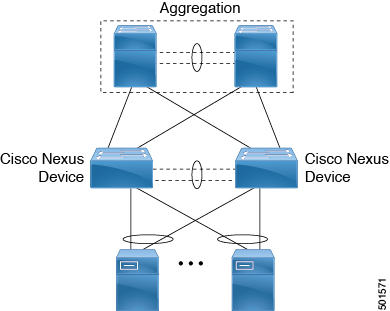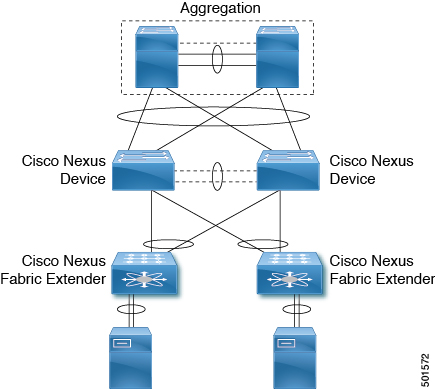Upgrading a Direct vPC or a Single-Homed FEX Access Layer
The following figures show topologies in which the access layer includes a vPC configuration to hosts or downstream switches.
Hosts Directly Connected to vPC Peers

vPC Peered Dual-Supervisor Virtual Modular System Single-Homed FEXes

Cisco Nexus Device Connected to Downstream Switches

To upgrade the access layer without a disruption to hosts, follow these tasks:
-
Upgrade the first vPC switch (vPC primary switch). During this upgrade, the switch is reloaded. When the switch is reloaded, the servers or the downstream switch detects a loss of connectivity to the first switch and starts forwarding traffic to the second (vPC secondary) switch.
-
Verify that the upgrade of the switch has completed successfully. At the completion of the upgrade, the switch restores vPC peering, connected Nexus 2000 FEXes, and all the links.
-
Upgrade the second switch. Repeating the same process on the second switch causes the second switch to reload during the upgrade process. During this reload, the first (upgraded) switch forwards all the traffic to/from servers.
-
Verify that the upgrade of the second switch has completed successfully.
 Note |
Flows that are forwarded to a switch during an upgrade on the switch will failover to the second switch. Also, flows are redistributed when vPC peers are active. The traffic disruption is limited to the time required for the server or host to detect the link-down and link-up events and to redistribute the flows. |

 Feedback
Feedback